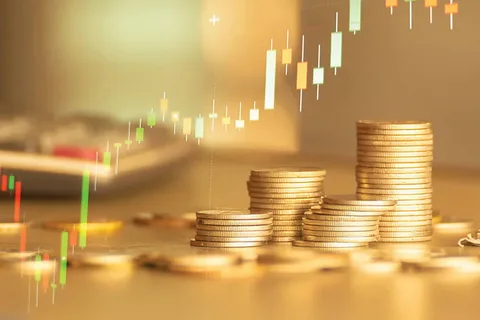The worlds of TV and film are littered with historical tales, which often chart seismic and influential global events with varying degrees of truth and accuracy.
Take The Big Short, which charted various events that led up to the 2007 housing market crash and subsequent global recession. Despite being a Box Office success, it was also critically well-received and earned praise for its historical accuracy, with David McCandless’s visual blog Information is Beautiful describing the film as being “shockingly truthful”.
But what exactly does the film do well, and how relevant is its message as the world inches towards another global recession barely 15 years on? Let’s get into it!
The Big Short – What’s it All About?
While the film itself comprises three separate but concurrent stories, these narratives all played a key role leading up to the subprime mortgage crisis.
This followed a period of sustained economic growth and above-average house prices, the latter of which was partially fuelled by reckless borrowing and 100% mortgages. Property values peaked in 2006, but this coincided with a significant rise in mortgage loan delinquency.
As a result of increasingly lax underwriting standards, a staggering one-third of all US mortgages granted in 2006 were subprime in nature or ‘no-documentation’ loans, which comprised around 17% of all home purchases that year.
Various macroeconomic and stock market indicators raised concerns in the subsequent months, before the American real estate investment trust New Century (which focused primarily on subprime lending and securitisation) filed for Chapter 11 bankruptcy protection towards the end of 2006.
This further precipitated the subprime mortgage collapse, with Bear Stearns forced to bail out two of its hedge funds in June 2007.
These funds had exposure to collateralized debt obligations worth $20 billion, including a strong emphasis on subprime mortgages. American Home Mortgage subsequently filed for bankruptcy too, before companies throughout the developed world (including Northern Rock in the UK) began to seek bank bailouts and inched towards collapse.
The global financial crisis then began in earnest towards the end of 2007, as the subprime housing market completely collapsed and shockwaves were felt throughout the world.
Combining Creative License With Accurate Reporting
The Big Short covers each of these events and their background narratives, making a conscious decision to connect each individual story while separating the lives of characters (who were also given false names at least in part to protect their identity).
However, apart from altered character names and some minor biographical tweaks, the film provides a brutally honest depiction of the events that unfolded and allow the story to tell itself without the need for excess dramatization.
Reviewer Glenn Kenny commented that the film managed to be entertaining, engaging and terrifying all at once, as it was able to delve into the reckless financial management and rampant greed that not only helped trigger the great recession but also exacerbated its global impact.
At the same time, Kenny praised the film’s ability to effectively communicate its message and relay what are inherently complex events, in a way that viewers could understand. This is a remarkable feat, and one that partially explains the films enduring popularity and relevance today.
Why Else is The Big Short Relevant Today?
Of course, the film has fluctuated in popularity to some degree since its 2015 release, enjoying a noticeable resurgence in January 2021 following the infamous GameStop short squeeze and scrutiny of retail investment markets in the digital age.
It also has increased relevance in the current macroeconomic climate, as inflation rates remain disproportionately high throughout the western world and central banks respond by hiking their base rate of interest.
In the short term, this is forcing households to cope with increased spending and borrowing costs, even as wholesale energy prices fall and inflation in most developed economies (particularly the US) starts to ease.
Notably, the current circumstances are largely different to those that preceded the great financial crash, while inflationary recessions remain relatively rare. However, rampant house price growth has been a key characteristic of recent economic performance in the US and UK, while a recent decline in valuations and subsequent hike in mortgage delinquencies has raised fears of another global financial collapse.
In fact, mortgage delinquencies rose in line with the frequency of late payments during March 2023, continuing a worrying trend that evoked memories of The Big Short. This will definitely be an interesting space to watch in the near-term, while it will be fascinating to see if investors and the financial markets have learned their lessons from the previous 15 years.









